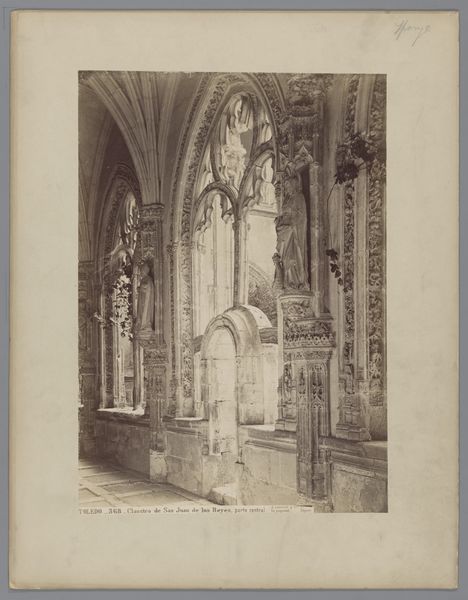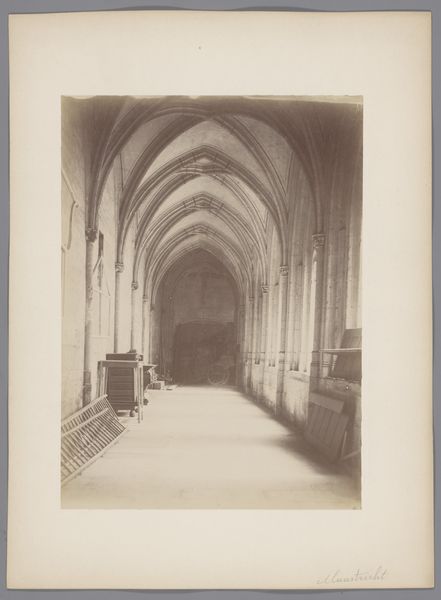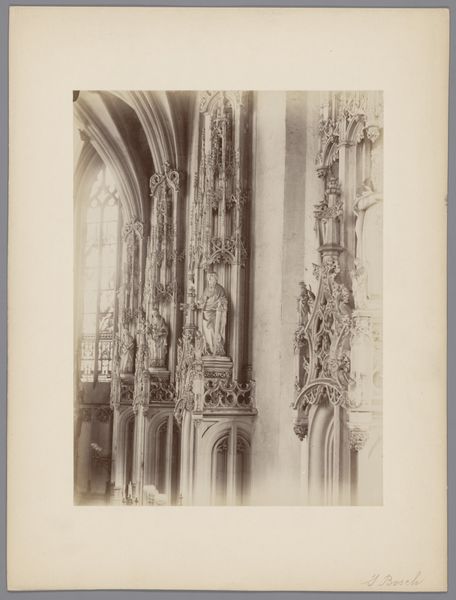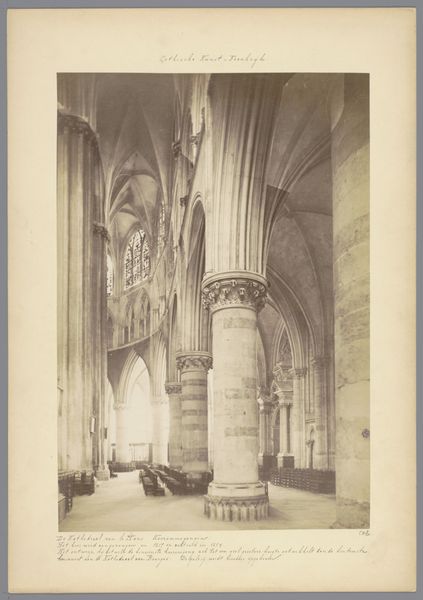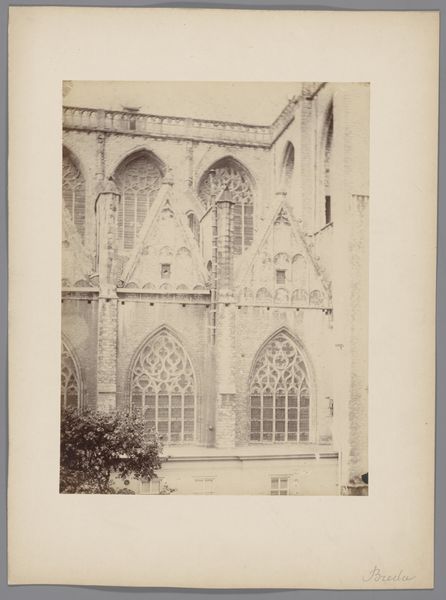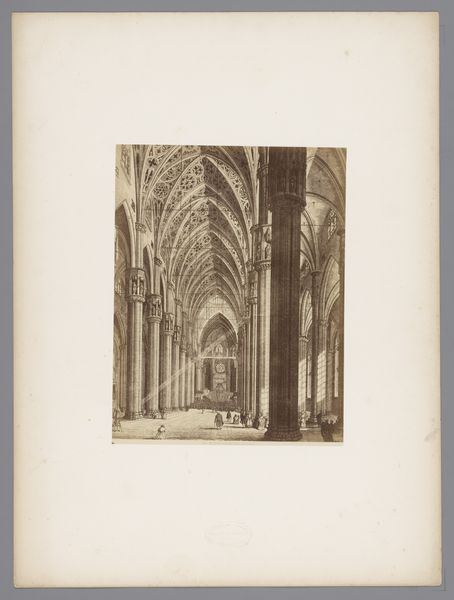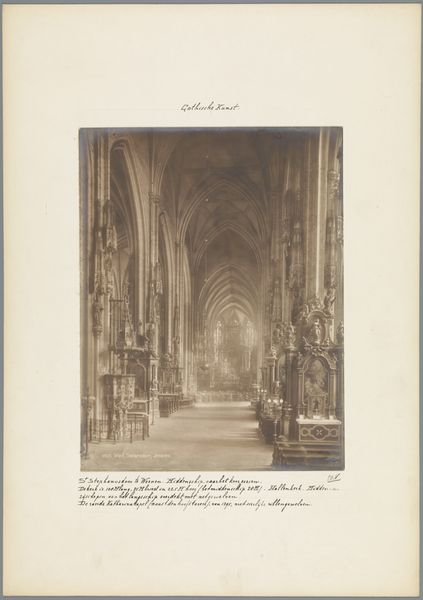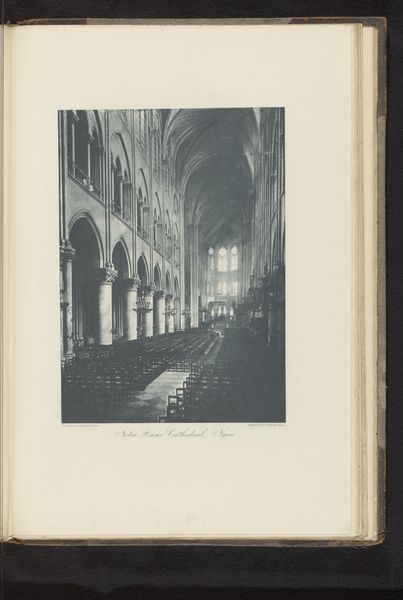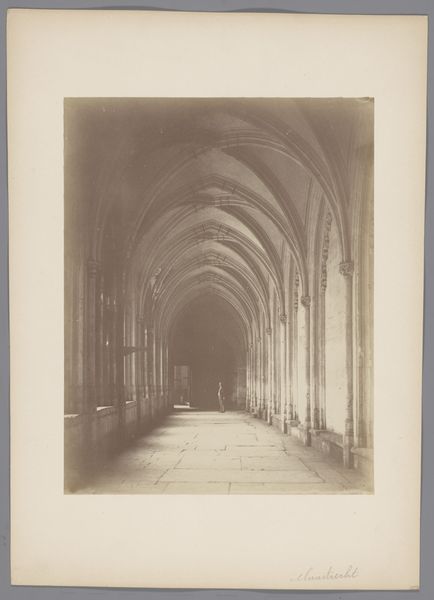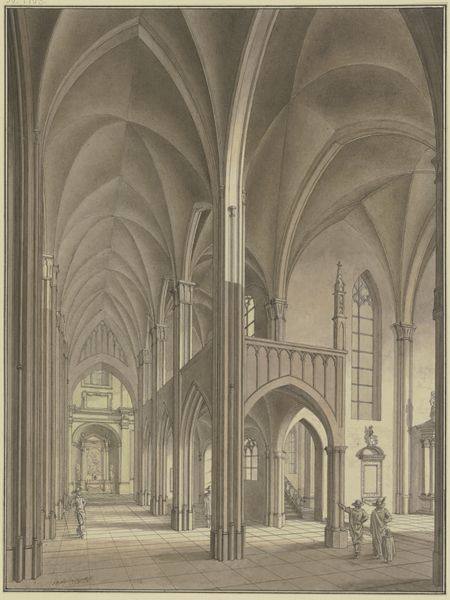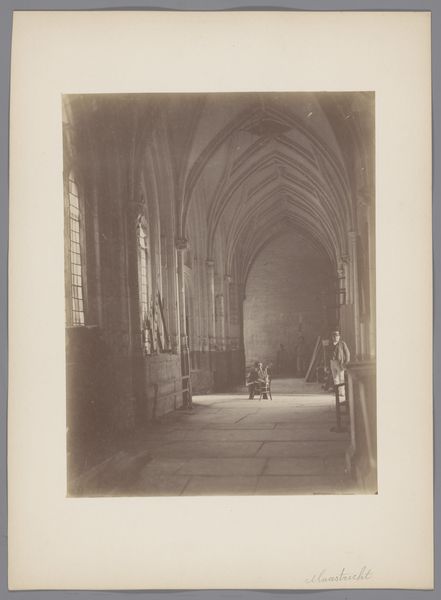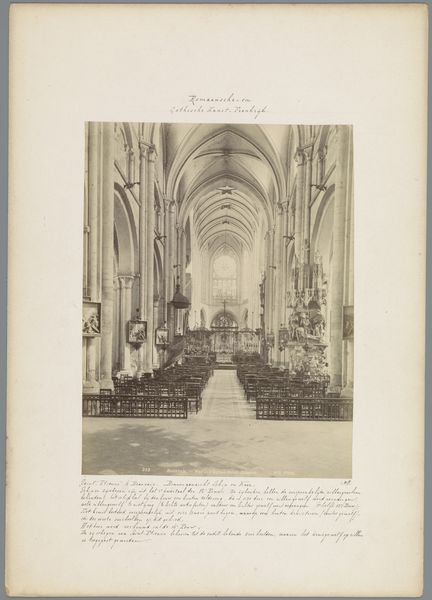
Deel van de kruisgang van het klooster van San Juan de los Reyes te Toledo c. 1875 - 1900
0:00
0:00
juanlaurent
Rijksmuseum
print, photography, sculpture
#
medieval
# print
#
landscape
#
photography
#
sculpture
Dimensions: height 347 mm, width 244 mm
Copyright: Rijks Museum: Open Domain
Curator: This photograph by Juan Laurent, taken between 1875 and 1900, depicts a section of the cloister of San Juan de los Reyes in Toledo. Editor: What strikes me first is the somber tone. The arches receding into the distance, the light and shadow play creating this sense of enclosure and quiet contemplation. Curator: Absolutely. The Gothic architecture itself tells a story of power and faith, constructed under Ferdinand and Isabella to commemorate the Battle of Toro. But beyond religious zeal, the monastery symbolizes a consolidation of power after centuries of conflict. Editor: See, that interplay of light, of verticality, it leads your eye relentlessly forward, mimics the pursuit of transcendence. Do you see how each archway frames not only sculpted figures, but almost sculpts the light itself? Curator: And within those framed spaces, we confront the remnants of a conflicted history. Consider the layers of symbolism – a testament to triumphant Catholicism rising on contested soil. The cloister, while offering solace, also silently echoes previous social struggles, doesn't it? Editor: Yet Laurent focuses our gaze—the photograph’s tonality—on those very structural and ornamental relationships. It encourages us to read its intrinsic qualities; line, shape, and value communicate harmony, in a formal visual sense. Curator: However, by focusing only on the architecture, aren’t we ignoring the political climate within which this photo was created and consumed? Photography itself during this period reflected the prevailing ideologies of empire, scientific study, and, certainly, architectural preservation, wouldn't you say? Editor: Agreed, and still… there is the composition: each structural element speaks and the tonal balance evokes the enduring beauty and the monumental impact this cloister must have had. I can't help but see its enduring design elements and their powerful effect first. Curator: It makes me reconsider how we engage with sites of historical importance, understanding that even beautiful photographs might reinforce existing narratives, especially considering how photographic processes have often excluded the experiences of the subaltern classes in those narratives. Editor: A balance between immediate aesthetic experience, combined with broader sociocultural and political considerations. In the end, perhaps appreciating architecture – whether through life, travels, or photographs, is about layering experiences for a truly complete insight.
Comments
No comments
Be the first to comment and join the conversation on the ultimate creative platform.
